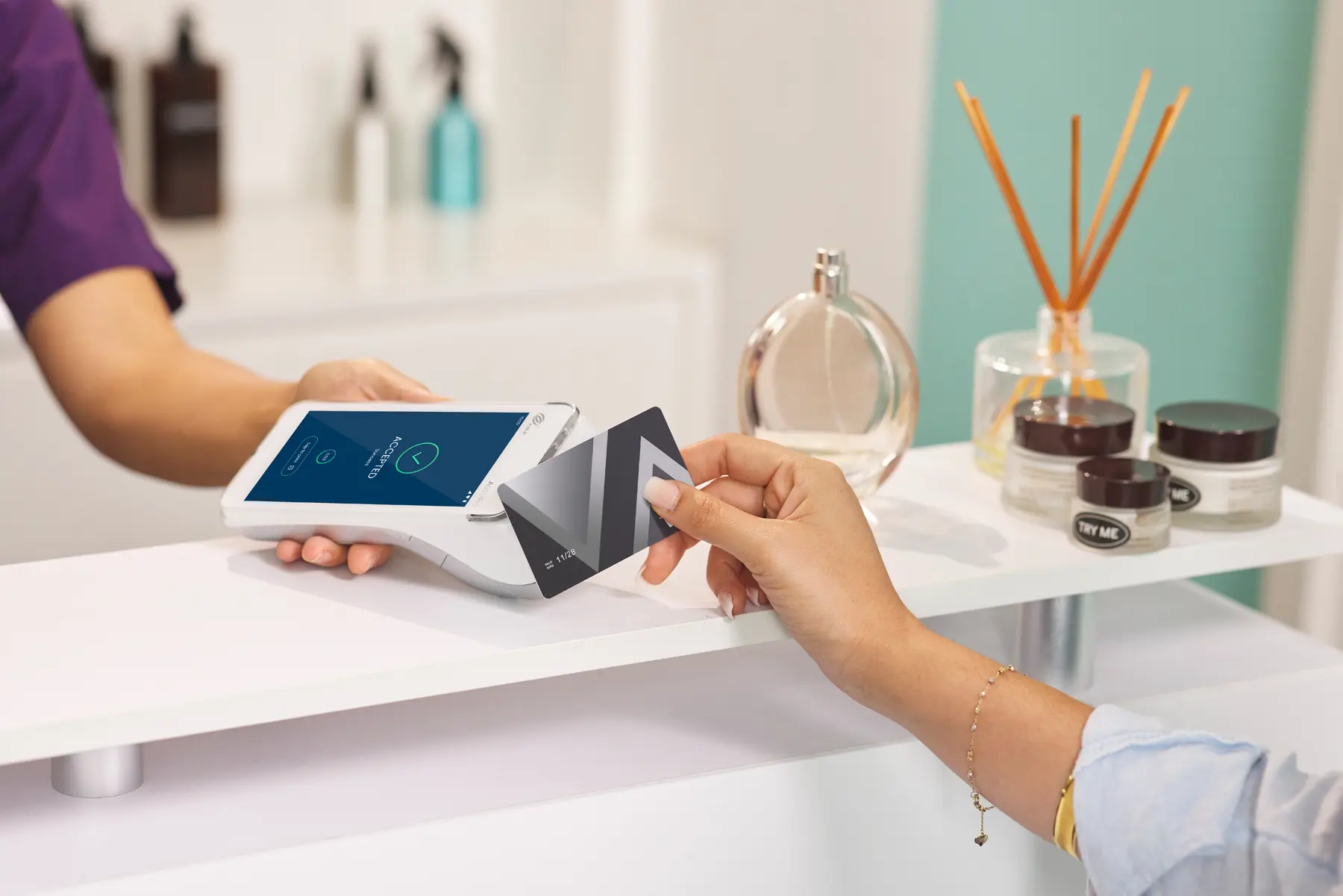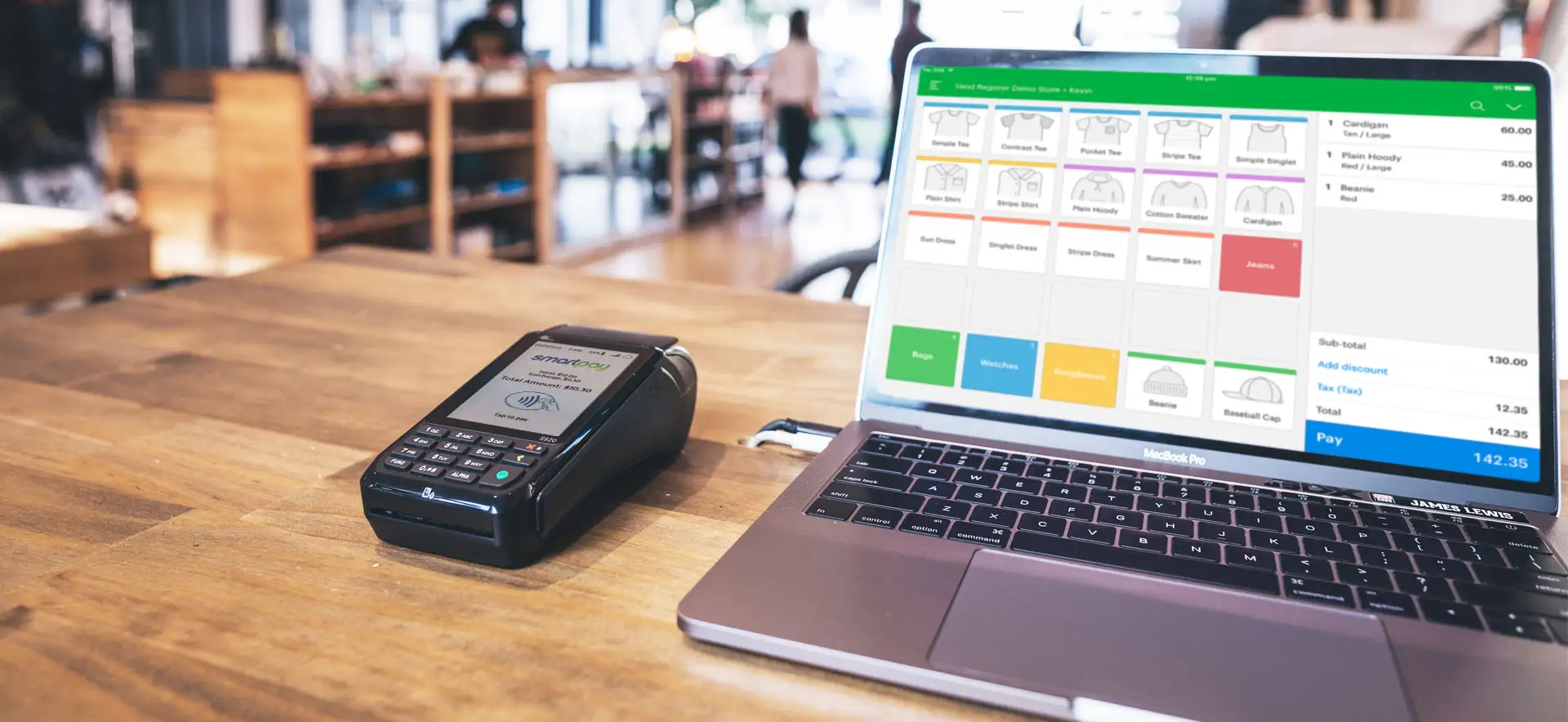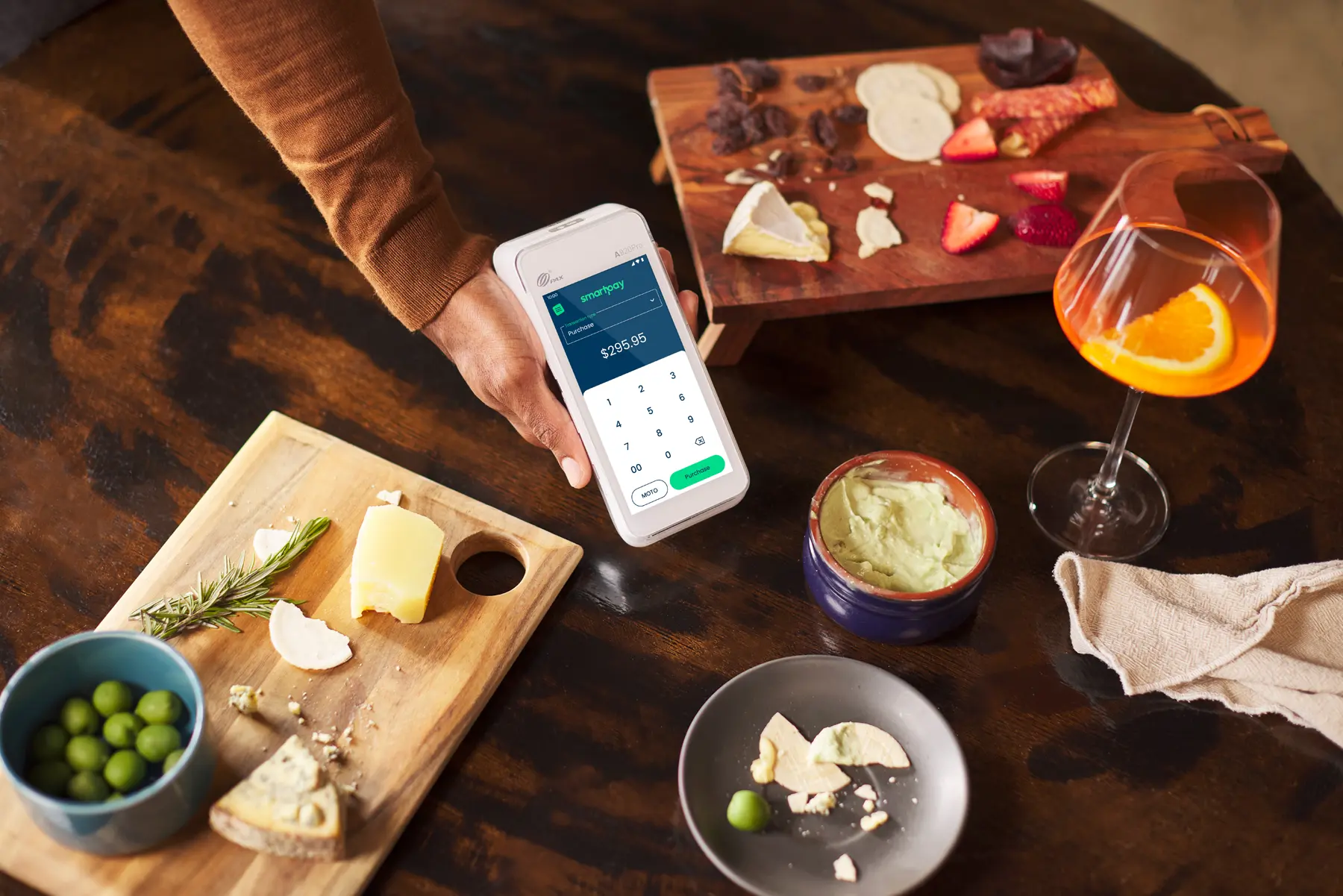
There are all sorts of systems and tools you might use to help manage the ins and outs of running your small business. A point of sale (POS) system is one of your most important tools.
POS systems make business owners’ lives easier by streamlining sales processes, payments and inventory. POS systems can also manage business functions like accounting, rostering and more.
If you’re a Kiwi business owner seeking to upgrade your current setup, look no further. Our handy guide will help you understand the basics of a POS system and how to choose the right one for your business.
We’ll cover the key features to look for and the benefits of integrating your POS system with a payment solution like Smartpay.
So let’s jump right in and discover:
- What Is a Point of Sale (POS) System?
- Who Needs a Point of Sale System?
- How Does a Point of Sale System Work?
- The Makeup of a POS System
- How to Choose the Best POS System
- The Benefits of Integrating EFTPOS and POS Systems
- How POS Systems Seamlessly Integrate with Smartpay
What is Point of Sale (POS)?
A point of sale (POS) system is a technology solution for processing customer transactions. Back in the day, a mere cash register could be considered a POS system. Today, there’s so much more to a POS system. With the right software, business owners can manage payments, inventory and sales & marketing – all from a single centralised location.
What are the Benefits of POS Systems?
Here are some of the most important benefits a POS system can bring to your business:
- Increased efficiency: POS systems automate much of the transaction process. This frees up employee time and reduces the risk of human error. As a result, queues move quickly and more sales are processed.
- Improved customer experience: Customers expect fast and accurate transactions. With POS systems, businesses can provide a better customer experience. This encourages repeat business and positive word-of-mouth. That means more money in your pocket.
- Better data management: POS systems are centralised locations that can store and manage customer and sales data. This means no more fumbling around with spreadsheets or paper diaries, which is especially ideal for multi-site businesses.
- Better inventory management: POS systems can track your inventory levels in real-time. This makes it easier to order and track stock while also reducing risks like shortages or over-stocking.
- Acceptance of a variety of payment types: POS systems integrated with EFTPOS machines are used to accept a range of payment types. Your customers want to pay with cash, credit & debit cards, gift vouchers and mobile payments. A good POS system can accept them all, especially with the help of EFTPOS integration.
POS systems help businesses streamline operations, provide better customer experiences and access valuable data insights. Plus, more time saved by avoiding manual processes means more time spent on growing your business. Now, how’s that for simple and effective?
Who Needs a Point of Sale System?
Virtually any business with a physical location will likely choose to have a POS system. There are all sorts of POS providers, and they often specialise by industry, offering unique modules that help those businesses with customisable features and integration to other tools.
There are plenty of benefits POS systems offer beyond payment processing. Here are some examples of how POS systems help various industries:
- Retail: POS systems can help retailers manage inventory, track customer behaviour and streamline the checkout process.
- Restaurant and Food Service: POS systems help restaurants manage orders, track food inventory and streamline payments.
- Healthcare: POS systems can assist healthcare providers in managing patient information, scheduling appointments and processing payments.
- Beauty and Wellness: Salons, spas and other beauty and wellness businesses can use POS systems to manage appointments, track inventory, loyalty programs and process payments.
- Hospitality: Hotels, resorts and other hospitality businesses can use POS systems to manage reservations and track inventory. They can also handle payments, including tipping and pre-authorised transactions.
- Fitness and Leisure: Gyms, yoga studios and other businesses can use POS systems to manage memberships and process payments.
- E-commerce: Online retailers can use POS systems to manage inventory, process payments and track customer behaviour.
By now, we’re guessing you can’t wait to get your hands on a POS system. While these systems can definitely help your business in a big way, there are also a few key considerations to keep in mind:
- Upfront costs: Most POS systems charge a monthly subscription fee. Thankfully, there are cost-effective and even free options available for small businesses that want to explore the benefits of a POS.
- Set-up and maintenance: Set-up costs can include integration with third-party products and having the right network infrastructure in your business. Ongoing costs can include subscriptions and additional features.
- Training: A POS system is only as effective as its user. Implement training methods for staff and new employees to keep everything running smoothly.
How Does a Point of Sale System Work?
At its most basic level, a POS system calculates the total of a customer’s purchase, facilitates payment processing (generally through integrated payment hardware like an EFTPOS machine) and adjusts inventory levels to reflect the sale.
Here’s a step-by-step breakdown:
- Customer buys your product or service: A customer decides to purchase your goods or services, because why wouldn’t they? When the customer is ready to make a purchase, the business uses the POS system to initiate the transaction.
- POS system calculates the price of the sale: Once the business rings up the sale on the POS, the system provides a list of available payment options. This generally includes credit cards, debit cards or cash.
- Customer makes a payment: The customer pays with their desired method. The POS system automatically sends the transaction over to the EFTPOS terminal, which processes the payment.
- Proof of purchase: The POS system then provides the customer with a receipt. It also creates a merchant copy of the receipt.
- Finalising the sale and adjusting inventory: Some POS systems then update the business’ inventory. This helps businesses keep track of what has been sold, what is available and what needs to be restocked.
Of course, different POS systems can vary depending on the service provider. Some POS systems may offer more features, such as the ability to manage employee schedules or process online orders. Others stick to the bare-bones essentials.
The Makeup of a POS System
A POS system is made up of hardware and software components, either on-premise and/or cloud-based. Depending on its capabilities, it could also integrate with third-party software (such as for accounting) and hardware (such as EFTPOS machines).
Think of these components as your favourite buddy cop duo. They work together to handle your day-to-day tasks. They can also collect data and generate reports for different areas of your business.
POS Hardware
The specific hardware included with a POS system depends on the needs of the business.
Common types of hardware that work with POS systems include:
- Screens: A POS system usually features one or two screens. Cashier-facing screens support tasks such as transaction administration, item management and loyalty programs. Customer-facing screens typically just display transaction items and totals.
- Till: A secure cash drawer is usually present for accepting cash payments.
- Barcode scanner: A barcode scanner speeds up transactions by scanning items, reducing manual lookup errors and increasing the volume of transactions.
- Receipt printer: A printer produces receipts, quotes, and vouchers using paper rolls. It can also produce end-of-day reports and print invoices.
- EFTPOS terminal or card reader: An integrated EFTPOS terminal facilitates the acceptance of payments through credit and debit cards. It also manages contactless payments like Apple Pay and Android Pay, and loyalty programs such as Fly Buys or Airpoints. Some POS hardware might also allow payments to be accepted directly from its own card reader.
POS Software
Most POS software will come with a range of different industry or business-specific features that help manage tasks. Depending on your needs, you might choose a POS software that comes with some or all of these features.
- Inventory & order management: This feature helps businesses manage stock levels, product information and sales data. It can also provide stock alerts and automatically place orders with suppliers.
- Customer management: Helps track customer information and purchase history. This can help with targeted marketing, promotions management and loyalty programs.
- Payment processing: POS software usually integrates with payment providers and EFTPOS terminals to process transactions and accept payments from customers.
- Employee management: POS systems can also be used to manage employee time tracking and schedules. You can also set different access levels for employees within the POS system.
- Accounting: These features can be found within the POS or an integration with external software like Xero or MYOB. With accounting features, you can manage reconciliations, invoices and payments for the business.
- Reporting and analytics: POS systems can be used to provide detailed insights into business performance. Areas of focus can include sales, inventory and customer behaviour. This is also very useful for businesses with multiple sites.
How to Choose the Best POS System
Trying to find the right POS system can be like looking for a needle in a haystack. Finding the right solution means choosing the factors that are most important to your business.
To help you out, we’ve assembled a few of the most critical factors to consider:
- Industry-specific systems: Some POS systems are designed specifically for certain types of businesses, such as retail, hospitality or beauty. These systems offer features and functions for the specific needs of that industry.
- User experience: The user experience is an important factor to consider. A system with a clean, intuitive interface will make it easier for employees to use. This will save you from operational headaches and frustrated glares from your team.
- Reporting and analytics: POS systems collect useful information about your business every single day. The best POS solutions make it easy for you to access and report on all this juicy data.
- Easy Integration: Look for a system that can seamlessly integrate with your current business processes. This saves you time and reduces the complexity of managing multiple systems.
- Flexibility: There’s no limit for your business. That’s why you need to find a POS system that can support your business as it grows and scales. Systems that can easily add on new functionality and integrations are the most ideal.
The Benefits of Integrating EFTPOS and POS Systems
You can (and probably should) integrate your EFTPOS and POS systems. This solution is known as integrated EFTPOS.
With integration, your payment terminal is seamlessly connected to your POS software. Transactions are processed directly through the software. This removes the need to key in the transaction separately on the payment terminal.
When you ring up the sale on your POS system, the purchase amount appears directly on your EFTPOS machine. You can also see the completed sale confirmation on your POS system.
There are many benefits of using an integrated system, including:
- Increased efficiency: Integrated systems are major time-savers, as your staff don’t need to manually key transactions into your terminal. This keeps your queues moving and customers happy. It also reduces the risk of human error.
- Better customer interactions: Since your staff members don’t need to worry about entering transaction amounts to the payment terminal, they have more time to interact with your customers. This helps to create stronger relationships with patrons.
- Streamlined reconciling: Integrated EFTPOS systems save businesses a lot of time when it comes to reconciling transactions. All transactions are recorded in one place, making it much easier to track and report on sales.
How POS Systems Seamlessly Integrate with Smartpay
Integrating POS and EFTPOS systems is a logical step for any business. Smartpay offers a unique solution for small businesses by providing easy integrations with a variety of POS systems.
There’s never been a better time to partner with Smartpay. With Smartpay’s payment solutions, we’ve made the payment process easier than ever. Save on payment costs for your business with Smartpay Low Cost Tap & Pay, or rent an EFTPOS machine with our Long Term Rental solution. The choice is yours!
If you’re interested in learning how you can benefit from our integrated EFTPOS solution, get in touch with Smartpay today or learn more here. Our plucky team of experts is here to help you get down to business.




